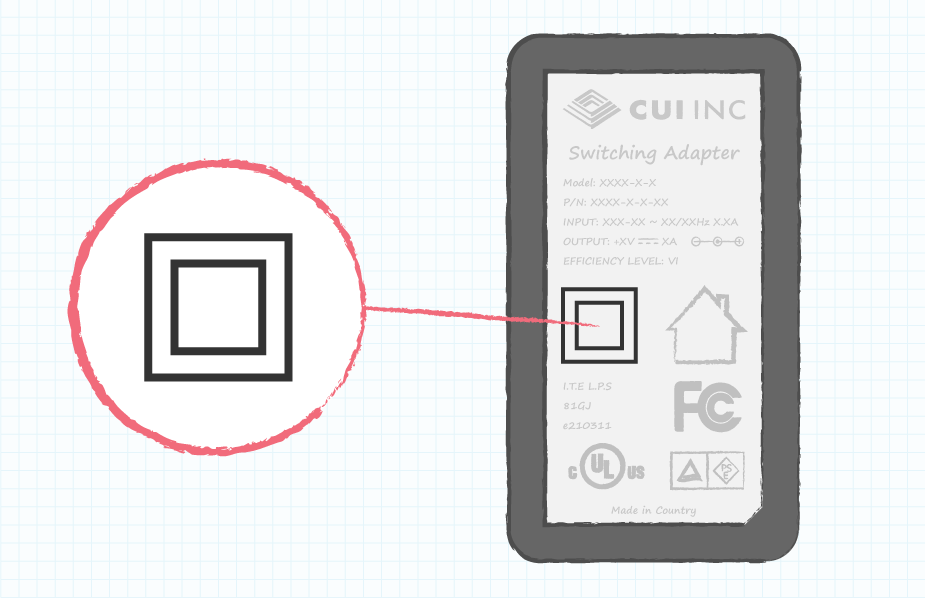October 9, 2020
When it comes to protection classes, there is often misunderstanding about the differences between NEC (National Electric Code) Class 2 and IEC (International Electrotechnical Commission) Class II rated ac-dc power supplies. In this Power Blog from CUI, they breakdown the difference between NEC Class 2 and IEC Class II and how they could impact the selection process of a power supply. Article by Bruce Rose.
Understandably, confusion often exists regarding the difference between Class 2 and Class II rated ac-dc power supplies. The differences are significant and important to understand. The NEC (National Electric Code) identification of Class 2 refers to the output voltage and power capabilities of ac-dc supplies, while the IEC (International Electrotechnical Commission) designator of protection, Class II, refers to a power supply’s internal construction and electrical insulation.
The NEC designation of Class 2 is important when installing an electrical system in a building. Class 2 power supply regulations address the wiring requirements (wire size and insulation, wire derating factors, overcurrent protection limits and methods of wiring installation) between the output of the supply and the input of the load. The limited output voltage and power delivery capabilities of Class 2 power supplies are recognized to be of lower risk to fire initiation and causing electrical shocks, which allows for lower cost wiring methods to be employed.

The IEC protection classes govern the construction and insulation of power supplies to protect the user from electrical shock. In a Class II power supply, there are two layers of insulation (or a single layer of reinforced insulation) between the user and the internal current carrying conductors. In supplies designed with two layers of insulation, the first layer of insulation is typically referred to as “Basic Insulation.” A common example of basic insulation is the insulation present on wires. The second layer of insulation is often an insulating case enclosing the product, such as the plastic case present on wall mount and desktop power supplies.

IEC protection Class II power supplies will have a two-wire power cord as opposed to a three-wire power cord with Safety Earth connection. Products designed with Class II insulation often are labeled as “Class II” or “double insulated” or will have the concentric square symbol on the safety label.
Understanding the difference between NEC Class 2 and IEC Class II designated power supplies is a simple, yet important factor in ensuring the correct products are specified in user applications. Ultimately, by selecting a Class 2 or Class II certified power module, you are better protecting your design against electric shock and other hazards and failures that may occur.
Back